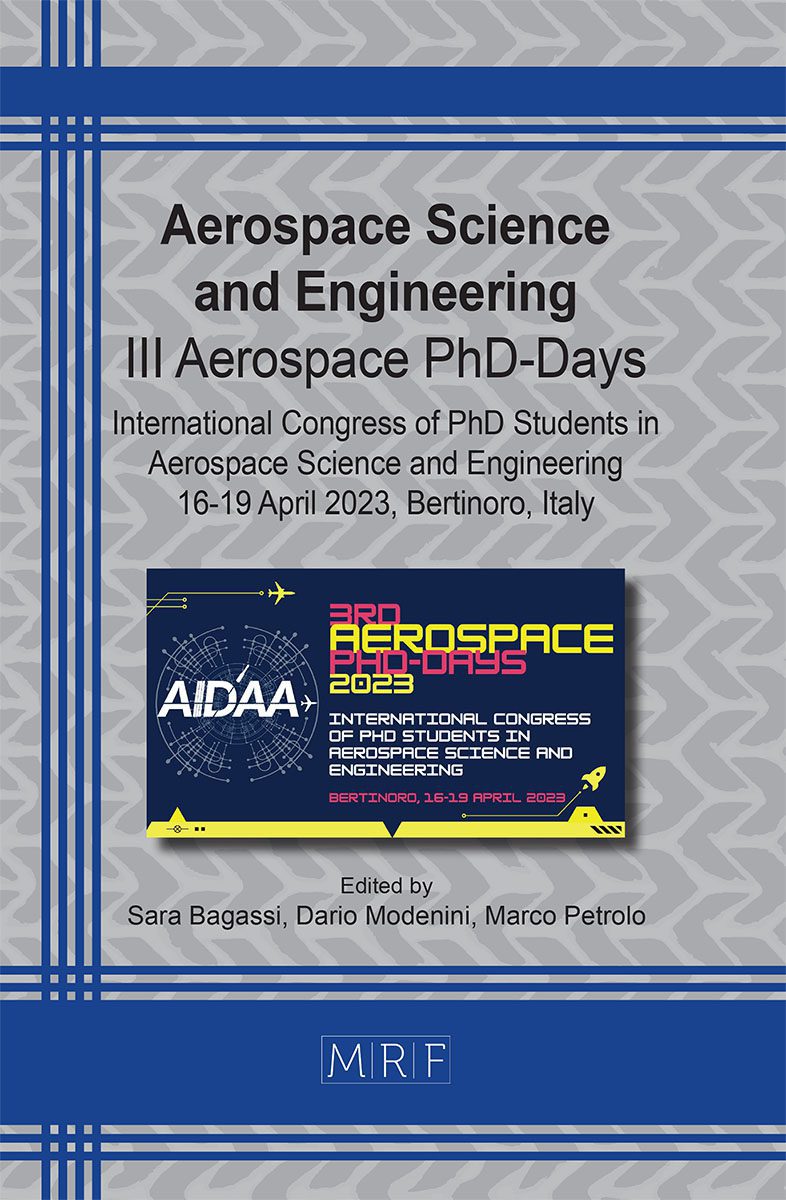How space technologies can address the impact of climate change on aeronautic and the aviation
Marianna Valente
download PDFAbstract. Aviation and flight management are strictly influenced by environmental conditions. Greater variability of the climate and the atmospheric phenomena carries greater risks for air navigation and increase cancellations and delay. An increase in the frequency and intensity of storms, torrential rains, hailstorms, fog, wind gusts, and other meteorological events may lead to a reduction in flight times and from a design point of view an increase in the weight of the aircraft, to counteract higher loads in operation. All of this could produce rising management and operational costs, as well as a reduction in profit. The instruments for remote monitoring as satellites, ground stations, and other technologies allow to collect data about several climate parameters such as temperature, humidity, rainfalls, wind patterns, etc. This data could be analyzed to obtain useful information to improve flights managements and airport services. Moreover, Artificial intelligence (AI) can be used to elaborate this information in real-time. This it makes possible to have more accurate forecasts and update the mathematical model for weather forecasting.
Keywords
Aviation, Climate Change, Space Technologies
Published online 9/1/2023, 7 pages
Copyright © 2023 by the author(s)
Published under license by Materials Research Forum LLC., Millersville PA, USA
Citation: Marianna Valente, How space technologies can address the impact of climate change on aeronautic and the aviation, Materials Research Proceedings, Vol. 33, pp 247-253, 2023
DOI: https://doi.org/10.21741/9781644902677-36
The article was published as article 36 of the book Aerospace Science and Engineering
![]() Content from this work may be used under the terms of the Creative Commons Attribution 3.0 license. Any further distribution of this work must maintain attribution to the author(s) and the title of the work, journal citation and DOI.
Content from this work may be used under the terms of the Creative Commons Attribution 3.0 license. Any further distribution of this work must maintain attribution to the author(s) and the title of the work, journal citation and DOI.
References
[1] A. Eldering et al., The Orbiting Carbon Observatory-2 early science investigations of regional carbon dioxide fluxes, Science, vol. 358, fasc. 6360, p. eaam5745, ott. 2017, doi: 10.1126/science.aam5745. https://doi.org/10.1126/science.aam5745
[2] M. A. Gibson et al., Development of NASA’s Small Fission Power System for Science and Human Exploration, 2015. https://doi.org/10.2514/6.2014-3458
[3] European Commission, Eurocontrol. Impact of Sea Level Rise on European Airport Operations; Eurocontrol: Bruxelles, Belgium, 2021.
[4] European Commission, Eurocontrol. Impact of Changes in Storm Patterns and Intensity of Flight Operations; Eurocontrol: Bruxelles, Belgium, 2021.
[5] European Commission, Eurocontrol Impact of Climate Changes in Wind Patterns On Flight Operations; Eurocontrol: Bruxelles, Belgium, 2021.
[6] European Commission, Eurocontrol. Impact of Climate Change on Tourism Demand; Eurocontrol: Bruxelles, Belgium, 2021.
[7] European Commission, Eurocontrol. European aviation in 2040 – challenges of growth – adapting aviation to a changing climate; Eurocontrol: Bruxelles, Belgium, 2018.
[8] S. Tanelli, E. Peral, E. Im, M. Sanchez-Barbetty, R. M. Beauchamp, e R. R. Monje, RainCube and its legacy for the next generation of spaceborne cloud and precipitation radars, in 2020 IEEE Radar Conference (RadarConf20), Florence, Italy, set. 2020, pp. 1-4. doi: 10.1109/RadarConf2043947.2020.9266437. https://doi.org/10.1109/RadarConf2043947.2020.9266437
[9] C. Radhakrishnan et al., Cross Validation of TEMPEST-D and RainCube Observations Over Precipitation Systems, IEEE J. Sel. Top. Appl. Earth Obs. Remote Sens., vol. 15, pp. 7826-7838, 2022, doi: 10.1109/JSTARS.2022.3199402. https://doi.org/10.1109/JSTARS.2022.3199402
[10] R. M. Schulte et al., A Passive Microwave Retrieval Algorithm with Minimal View-Angle Bias: Application to the TEMPEST-D CubeSat Mission, J. Atmospheric Ocean. Technol., vol. 37, fasc. 2, pp. 197-210, feb. 2020, doi: 10.1175/JTECH-D-19-0163.1. https://doi.org/10.1175/JTECH-D-19-0163.1
[11] T. V. La e C. Messager, Different Observations of Sea Surface Wind Pattern Under Deep Convection by Sentinel-1 SARs, Scatterometers, and Radiometers in Collocation, IEEE J. Sel. Top. Appl. Earth Obs. Remote Sens., vol. 15, pp. 3686-3696, 2022, doi: 10.1109/JSTARS.2022.3172375. https://doi.org/10.1109/JSTARS.2022.3172375
[12] R. Müller, A. Barleben, S. Haussler, e M. Jerg, A Novel Approach for the Global Detection and Nowcasting of Deep Convection and Thunderstorms, Remote Sens., vol. 14, fasc. 14, p. 3372, lug. 2022, doi: 10.3390/rs14143372. https://doi.org/10.3390/rs14143372
[13] D. Hentzen, M. Kamgarpour, M. Soler, e D. González-Arribas, On maximizing safety in stochastic aircraft trajectory planning with uncertain thunderstorm development, Aerosp. Sci. Technol., vol. 79, pp. 543-553, ago. 2018, doi: 10.1016/j.ast.2018.06.006. https://doi.org/10.1016/j.ast.2018.06.006
[14] V. Mazzarella et al., Is an NWP-Based Nowcasting System Suitable for Aviation Operations? , Remote Sens., vol. 14, fasc. 18, p. 4440, set. 2022, doi: 10.3390/rs14184440. https://doi.org/10.3390/rs14184440
[15] European Commission, Eurocontrol, SESAR European ATM Master Plan, Edition 2020.
[16] T. H. Nguyen, N. Tsafnat, E. Cetin, B. Osborne, e T. F. Dixon, Low-Earth orbit satellite constellation for ADS-B based in-flight aircraft tracking, Adv. Aircr. Spacecr. Sci., vol. 2, fasc. 1, pp. 95-108, gen. 2015, doi: 10.12989/AAS.2015.2.1.095. https://doi.org/10.12989/aas.2015.2.1.095































